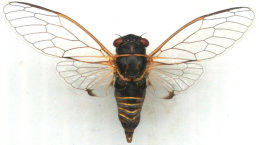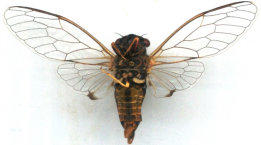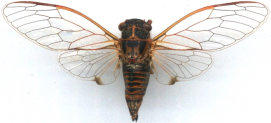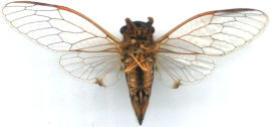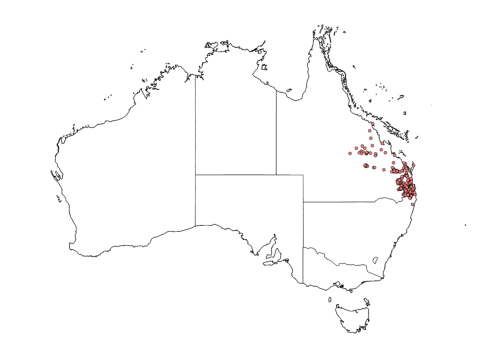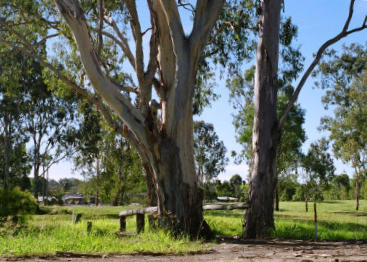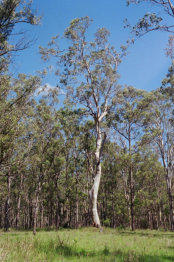
Sprinkler Squeaker
Popplepsalta annulata Goding and Froggatt, 1904
© Popple Creative Industries 2014–2025
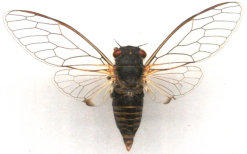

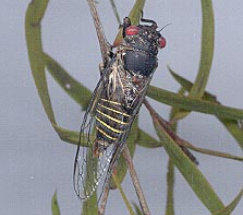
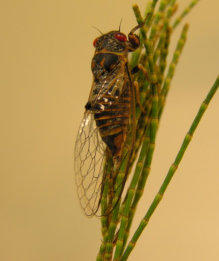
Male
Female
Species number (TNS):
432.
Fore wing length:
15–18 mm.
Distribution and seasonality:
From near Shute Harbour, Eungella Plateau,
the Boomer Range, Blackdown Tableland
and Mt Moffatt in central Queensland, then
south from Rockhampton to at least
Southport, including Biggenden, Gayndah,
Gunalda Range, Mt. Mee, Crows Nest,
Toowoomba, Pittsworth, Mt Cordeaux,
Beaudesert, Maroon Dam and Boonah. It is
a common species in north-east, south-east
and south-west Brisbane with records also
from Mount Crosby and Enoggera Reservoir
in the north-west. There are three records
from New South Wales: from near Swan
Vale (K. Warner), the Kyogle district and
north of Iluka. Adults occur from September
to March (or sometimes even to as late as
May).
Notable localities:
Bundaberg, Eidsvold, Laidley, Cleveland,
Coolangatta.
Habitat:
This species inhabits patches of dry
sclerophyll forest, particularly where
Eucalyptus tereticornis and E.crebra are
both present. It also occurs in heathland and
occasionally in tall open forest. She-oaks
such as Casuarina glauca and Allocasuarina
littoralis are inhabited in some lowland areas.
It will also occur in parklands and gardens
where it can be found on most trees and tall
shrubs.
Calling song and behaviour:
The male calling song has two main
components. The first consists of an
alternating long (~2 millisecs) chirp followed
by a short (~<1 millisecs) chirp; this is
constantly repeated and makes up the
"lilting" component of the song. The short
chirp is barely discernable by the human
auditory system. The second component is
made up of a ~1 millisec phrase constantly
repeated at 2 phrase intervals; this is known
as the buzzing or "rattling" component of the
song. The two components interchange
often in the calling song, creating a sound
almost exactly reminiscent of a small
sprinkler system. Males call from the outer
foliage of trees and shrubs.
Similar species:
Southern Red-eyed Squeaker, Inland Red-
eyed Squeaker, Maraca Squeaker, Retro
Squeaker, Mimic Squeaker, Subtropical Red-
eyed Squeaker, Dawson Range Squeaker.


dr-pop.net database record
Currently known extent
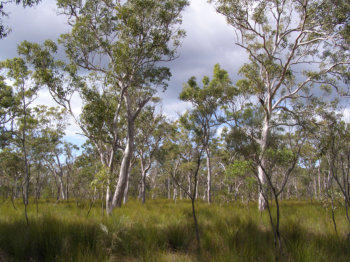
Habitat
